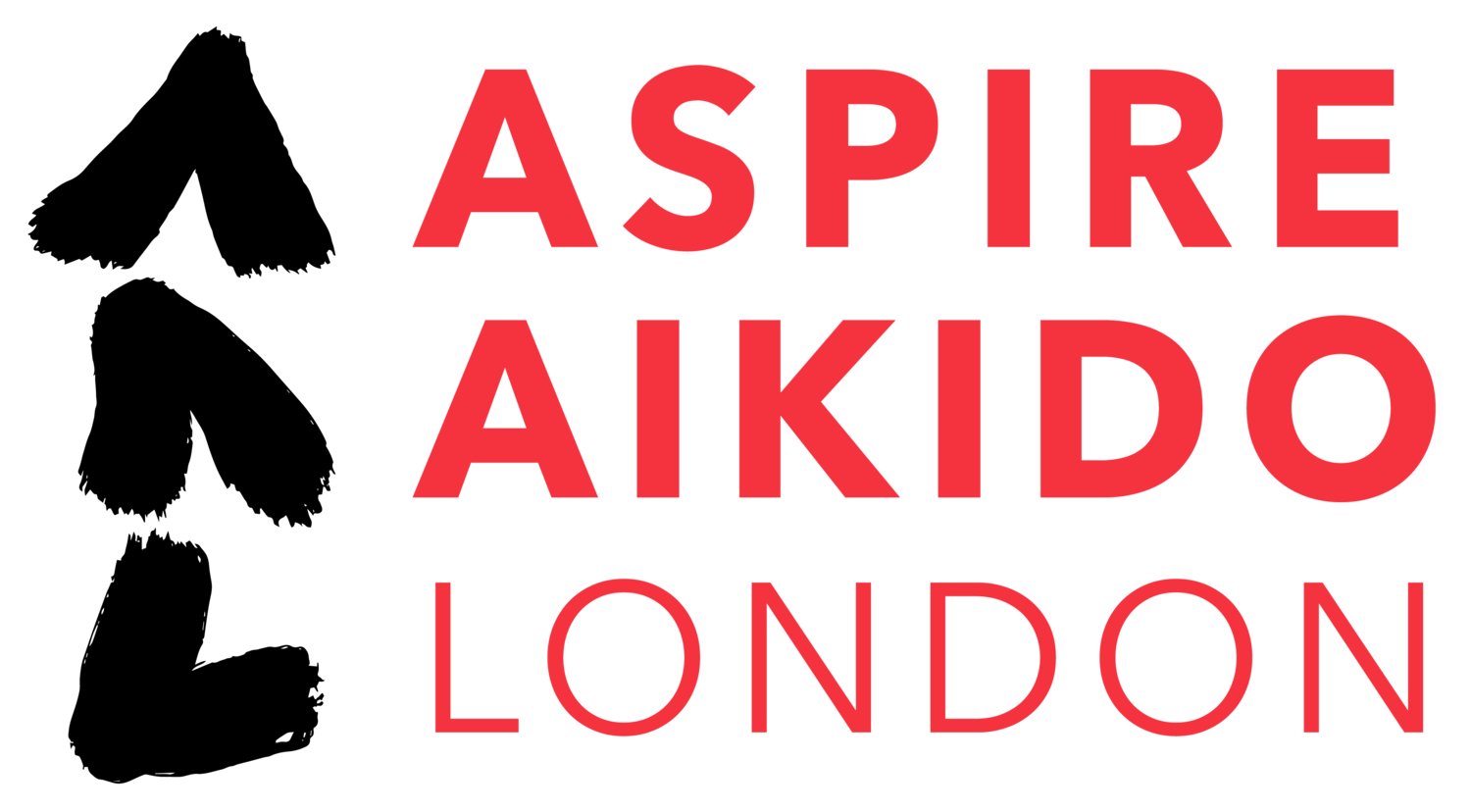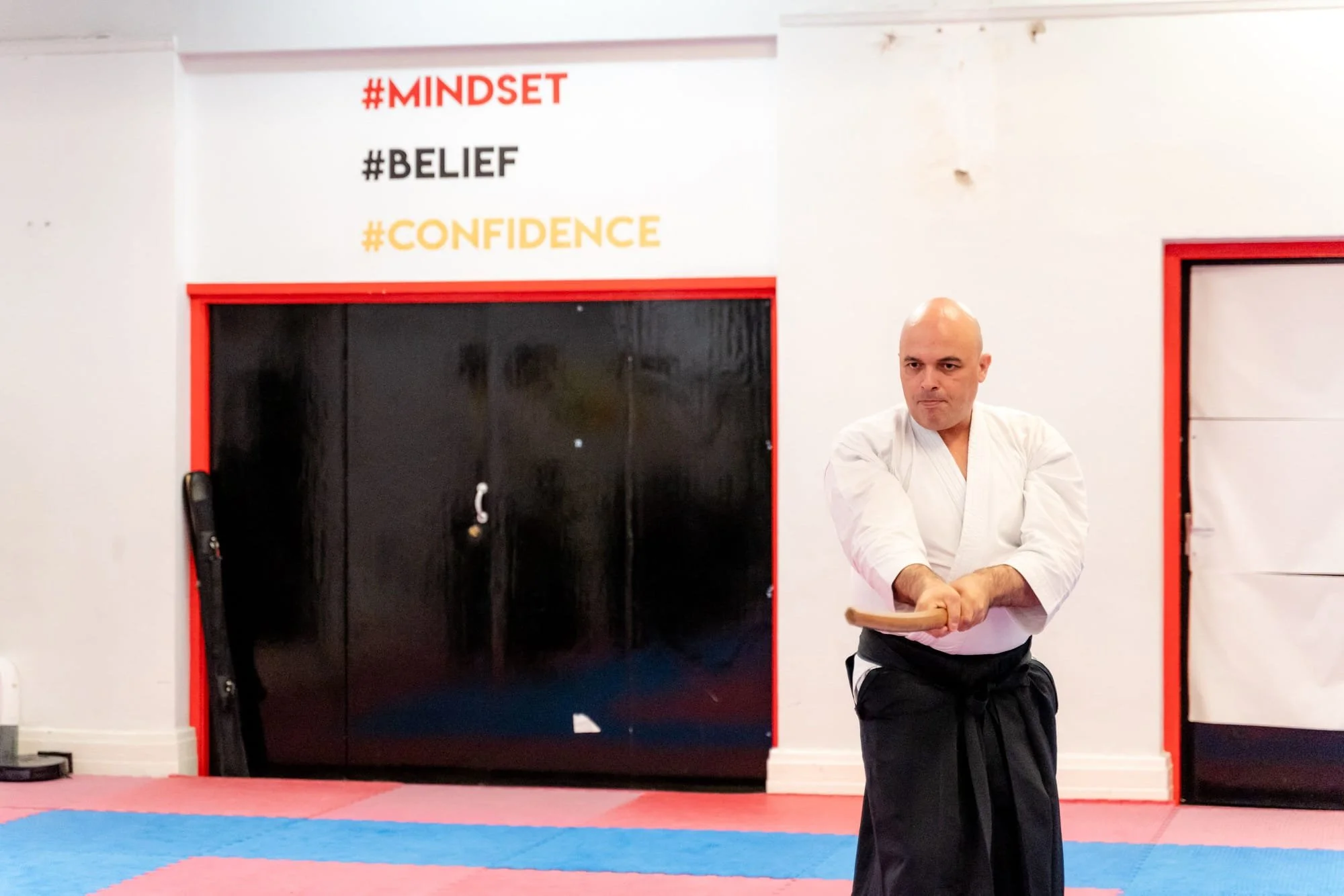Benefits with Bowing
What made me choose Aikido is the fact that there is a strong dojo etiquette with respect, where we see the instructor and students bowing before and at the end of each practice to a photo of O’Sensei (Founder) displayed in the shomen (front of the dojo), student bow to the instructor and bowing also takes place between students before practicing any techniques.
The sign of respect with bowing in Aikido (and all Martial Arts) is something that partly attracted me to learn this Art. Bowing when entering and leaving the Dojo has got nothing to do with worshipping but ONLY to show our respect.
Some say, bowing is only ‘just’ like a handshake and that there is nothing more to it. However, if we just talk about handshake, I am sure you will agree that you would not be too happy if someone shakes your hand with a dead fish (no shake, no squeeze, no energy) and with poor or no eye contact? You would rather have a good, proper handshake with good eye contact when you meet someone. So, when it comes to bowing, you will concur that it should not be any different i.e. one should do this properly too.
When we bow, we really use our whole body making the gesture, we actually sacrifice our body whereas a handshake is just one limb involved. So, I think it is fair to say that the benefits with bowing will be more than just a handshake and I can explain why.
With the bowing, you will feel this body gesture from your partner towards you and vice versa, so there is an Awase element where you wish to connect with our partner even though there is no physical contact like a handshake.
When you become accustomed with bowing from training Aikido for a while, you will sense the need to perform bowing with humility showing your honesty and respect towards your partner. So a good bowing must be performed without ego and it should be a clean movement done with right timing (Awase) and space so you are taking the time to do it properly within a safe distance rather than doing a quick and too close bowing without any meaning or feeling.
By the way, to be frank, before we can respect anyone else, I should stress that we, as individual must begin to respect ourselves first before respecting others, and we do this, by having a good hygiene with a good etiquette, we put a clean GI, belt on properly tied up and Hakama neatly put together, if you are an advanced Aikidoka.
When we put on our Gi, belt and Hakama, it gives us a moment to reflect how we put our attire together, if I speak for myself, it does give me a moment of reflection and meditation ready for training or for teaching any class.
When we line up at the start of any class, we also wait for our Instructor to be at the front of the class and we all bow to O’Sensei photo in the shomen as a sign of respect, and we bow to our Instructor teaching the class and we say at the beginning of a session: “Onegaishimas” which has quite a few meaning but I believe we say it with the meaning “please teach us” but also say this keeping in mind gratitude, generosity, resilience, open mind and cooperation.
During practice, the bowing with our partners is done simultaneously and if you do it correctly i.e. with humility, you will feel a sense of purification with your mind and heart and you will develop a positive feeling when you practice Aikido with your partner(s).
At the end of every session, we bow to our Teacher and our partners we trained with by saying “Domo Arigato Gozaimashita” - Thank you very much in Japanese.
If we bow wrongly without humility, one will soon experience serious limitations in learning the Art deeper. I have said before that Aikido techniques are only ‘revealed’ when we have the right mindset (and skills too). Those who would want to learn Aikido for ill intent or evil purposes will not be able to progress very far. The instructor would ask them to leave the dojo immediately. The instructor does an important role to play not only to teach but to ensure students can safely practice Aikido without fear of any injuries.
In my experience, I have seen how gracious and beautiful Aikido techniques can be when a senior Instructor has attained many years of Aikido experience and their bowing is different than beginners’ bowing. Their Aikido contains something special as they get older (and wiser) that many young practitioners cannot do or copy, because their understanding of Aikido is not on the same level as them.
It would be quite normal to think that a senior Instructor would be on another level of Aikido understanding than the younger generations, just as they were when they were young, their level of understanding with Aikido was different then. We can appreciate their techniques to be ‘flowing’ effortlessly and becoming ‘alive’.
If we view O’Sensei videos, we can see how clean his movements were and his techniques looked easy to do but I can assure you that they aren’t and many of them look rather impossible to achieve still for many of us. O’Sensei’s Aikido was beautiful to watch and we could see how humble he was when he performed precise bowing.
So I am convinced that when we train in Aikido, we should not neglect our bowing but instead spend some time to practice how to do a good bowing, just the same when we practice Aikido techniques in my personal view. One good way to do this is to practice it at home in front of mirror.
Unfortunately, we do see, every now and then, a few Aikidokas who fail to bow correctly or that they do a ‘semi’ or quick bowing, to quickly get to practice techniques with their partner.
So, when you bow, you should do so with your feet together, our hips moving the upper body forward and down keeping your back straight, your neck should not bend down, your eyes towards your partner, your hands should be placed to the sides of your body side-line and arms down straight and within a safe distance so you are not too close or too far from your partner.
To me, bowing correctly means you do this in ‘Awase’ with your partner, but also with Zanchin (alertness) before and during the bowing. Although, I am sacrificing my body during the bowing moment with humility & retain my Zanchin - my partner will sense that I am aware and will not dare to attack during the bowing movement. Sadly many do not apply Zanchin when Bowing and ‘trust’ their partner too much or too easily.
Finally, when you perform good bowing, your Aikido will begin to affect you as a person simply because you will be more open and connected with your heart, which will gradually change your Aikido with extra sensitivity with Zanchin.
All in all, after explaining what constitute a good bowing, one experienced Aikidoka can see another person’s level of Aikido by watching how they perform their bowing, just the same with how they tie their belt.
My final advice would be to ‘connect’ with your heart and seek humility during practice but also when bowing…

